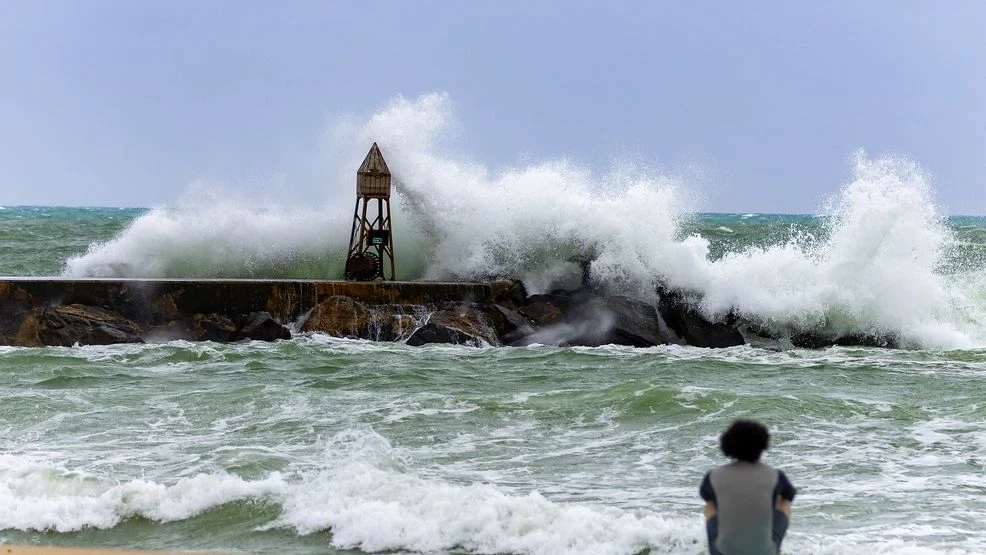BREAKING: Just In: In Cuba, Hurricane Rafael causes chaos and exacerbates the island’s electrical difficulties…..
Cuba is devastated by Hurricane Rafael, which exacerbates the island’s electrical crisis.
The hurricane season came to a disastrous end just two weeks after Oscar when 115 mph winds and heavy rainfall struck western Cuba.

Saraís González realized she was significantly poorer on Thursday morning than she had been the day before. Her kitchen, bathroom, and one room in her home were all devastated by Hurricane Rafael’s strong impact as it blew over Alquízar, her town in western Cuba, on Wednesday afternoon.
She told EL PAÍS, “What we went through yesterday was terrible — hours of fear and uncertainty.” “My infant let out a heartbreaking cry.” After gathered in one room, we had to relocate to the closet, and my spouse sought cover beneath the bed. We spent hours there while the wind howled all around us. It was devastating to observe how unhappiness consumes us upon waking up, on top of the difficulties we already encounter.
It is still unknown how much damage Rafael caused in the western region of Cuba, over twenty-four hours after it made landfall as a Category 3 hurricane. Hours before the hurricane hit, on Wednesday afternoon, Unión Eléctrica, the state-owned power utility, declared that the whole national power grid had been cut off, leaving many places still totally cut off.
With maximum sustained winds of 115 miles per hour (185 kilometers per hour), the storm hit shore at Playa Majana, approximately 47 miles (75 kilometers) southwest of Havana, shortly after 4 p.m. It moved through the island close to Bahía de Cabañas as a Category 2 storm at 7 p.m. There was enough time to leave a destructive path in its wake.

Restoring power in western Cuba will be a “slow process,” according to the Cuban Ministry of Energy and Mines. Even nevertheless, a few photos and videos that are making the rounds on social media show the extent of the catastrophe: fallen trees, floods from storm surges and strong rains, and structural collapses. Many people in the southern province of Artemisa claim that their homes’ roofs have been destroyed. A network that was recently struck by a wave of severe blackouts has been made worse by the significant damage to much of the power infrastructure. Heavy rains have blocked off Jibacoa, a town in the country’s center. There have been thousands of evacuations.
However, Cuban officials guarantee that no one was killed in the natural tragedy. The government has set aside funds for recovery work in the provinces of Artemisa, Havana, and Mayabeque, according to a post made by President Miguel Díaz-Canel on X.
For Cuba, the storm season this year has been particularly destructive. Oscar battered the eastern portion of the island on October 20 with winds of up to 80 mph (130 km/h), then Hurricane Rafael arrived just two weeks later. Oscar’s arrival caught residents in places like Imías, Maisí, Baracoa, and San Antonio del Sur off guard. They were already dealing with a nationwide blackout that left the entire country without power for more than three days from October 18 to 22. They watched as the destruction unfolded in front of them: swollen rivers, over 30,000 evacuations, massive material losses, and at least 20 people missing, though the official toll lists eight fatalities.
A number of Cuban exile organizations that had been providing aid following Oscar’s damage are now stepping up their efforts to lessen Rafael’s devastation. Support has also been promised by a number of states and international organizations. Canada announced a $400,000 commitment for humanitarian materials including water, sanitation, and hygiene services. To help feed Oscar’s impacted relatives, the Mexican company Richmeat donated 100 tons of meat. The World Food Program (WFP) promised to provide food modules and technical equipment, and UNICEF dispatched 1,498 kilos (about 3,300 pounds) of medical supplies to the island.



